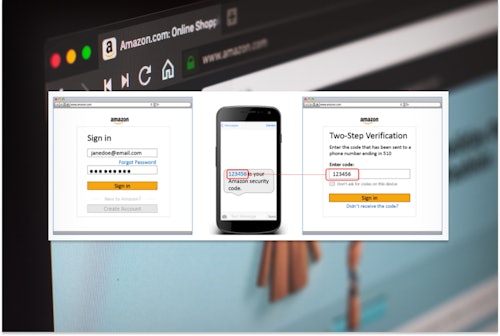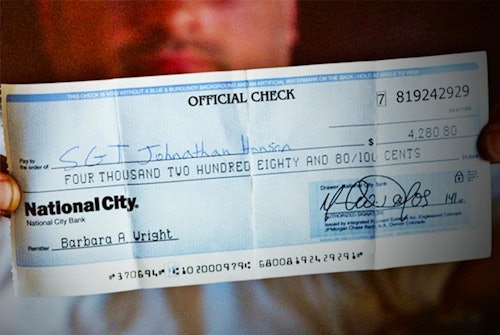- 7 Ways to Get the Most Out of Your Tax Refund
- Don't Take the Standard Deduction
- Consider Your Filing Status
- Claim Dependents
- Claim Charitable Contributions
- Claim the Earned Income Tax Credit
- Contribute to Your Retirement Plan
- Review Lesser-Known Credits
- Frequently Asked Questions
With tax season in full swing, make sure you’re not missing out on exclusive tax benefits that may boost your tax refund. As a result of the coronavirus pandemic, taxpayers are getting a little extra help with updated credits and deductions. To get the biggest refund possible, here’s what to do when filing your taxes:
7 Ways to Get the Most Out of Your Tax Refund
Use these tips to maximize your 2022 tax return:
- Don’t take the standard deduction
- Consider changing your filing status
- Claim dependents
- Claim charitable donations
- Claim the earned income tax credit
- Contribute to your retirement plan
- Review lesser-known credits
Don't Take the Standard Deduction
In 2017, the Tax Cuts and Jobs Act nearly doubled the standard deduction for 2018 through 2025. While this made it harder for some to claim more than the standard deduction, you may still want to consider itemizing your return this year.
For example, if you’re a single filer with a relatively large mortgage, itemizing your deductions may put you in a better position to get more back on your refund. You may also be able to exceed the standard deduction by claiming charitable contribution deductions and medical expense deductions.
Consider Your Filing Status
If you’re married, you may want to reconsider filing jointly this year if any of the following situations apply to you:
- One of you is self-employed
- You have a lot of itemized deductions
- You’re struggling with student debt
For those who own a small business or work full-time as a freelancer, you’ve likely already been paying estimated quarterly payments to cover the amount of tax you owe. However, if you underestimated your payments or haven’t been making them, it may increase your joint tax liability and lead to a smaller return.
Do the Math
Keep in mind that splitting your taxes up may disqualify you from some key tax credits or deductions. You’ll need to run the numbers first before deciding which route to take.
Or, if one of you is struggling with student loan debt and filing jointly, any income-based repayment plan will look at both of your wages as one income. When filing separately, only the income of the person with the student debt will be taken into account for a repayment plan.
Finally, if there’s a pretty sizable gap in what you each earn and if one or both of you has a substantial amount of deductions to claim, filing separately may get you the full amount of tax benefits.
Single Filers May Qualify for Head of Household
For those with single filing status, you may try to qualify for head of the household status. To qualify, you must:
- Pay for more than half of your household expenses
- Be considered unmarried for the tax year, and
- Claim a qualifying dependent (this could be a child or a dependent adult)
Heads of households get a larger standard deduction than those filing single, so it’s worth a look.
Claim Dependents
Both the child and dependent care credit and the child tax credit were substantially increased last year (2021 tax year). Although the credits are no longer that high, you are still able to claim childcare expenses on your 2022 tax return.
For 2022 the child and dependent care credit maximums are:
- $3,000 for one qualifying individual or
- $6,000 for two or more qualifying individuals
This credit can apply to children 13 years or younger or to individuals who are physically or mentally incapable of taking care of themselves.
Claim Charitable Contributions
This year, to claim the charitable contributions deduction, we return to itemizing our deductions. You'll need to submit Form 1040 and itemize your charitable deductions on Schedule A.
Remember to keep some kind of record of your contribution, such as a:
- Bank record
- Payroll deduction record
- Written communication or receipt from the organization
Claiming the charitable donations you made during 2022 will help lower your tax bill.
Claim the Earned Income Tax Credit
Low- and moderate-income taxpayers without qualifying children may claim earned income tax credit (EITC).
The maximum credit you'll be eligible for will depend on the number of qualifying children you have:
- 0 qualifying children: $560
- 1 qualifying child: $3,733
- 2 qualifying children: $6,164
- 3 or more qualifying children: $6,935
Contribute to Your Retirement Plan
It’s not too late to contribute to your retirement plan. Although 2022 is now behind us, you have up until April 18, 2023 (or your filing deadline) to make contributions to your traditional IRA. (Note that not all IRAs follow this deadline date.)
Actual contribution and deduction limits depend on your adjusted gross income, but you may be eligible to receive a deduction of up to the contribution limit of $6,000.
Review Lesser-Known Credits
You may already be familiar with some of the bigger deductions and credits but be sure you’re aware of all the lesser-known ones that you may be missing out on.
For example, if you’re a homeowner who installed energy-efficient items in and around your home, you may qualify for non-business energy credit, solar credit, or a few other energy credits. While they aren’t necessarily the biggest credits, every little bit counts when it comes to your refund.











Comments